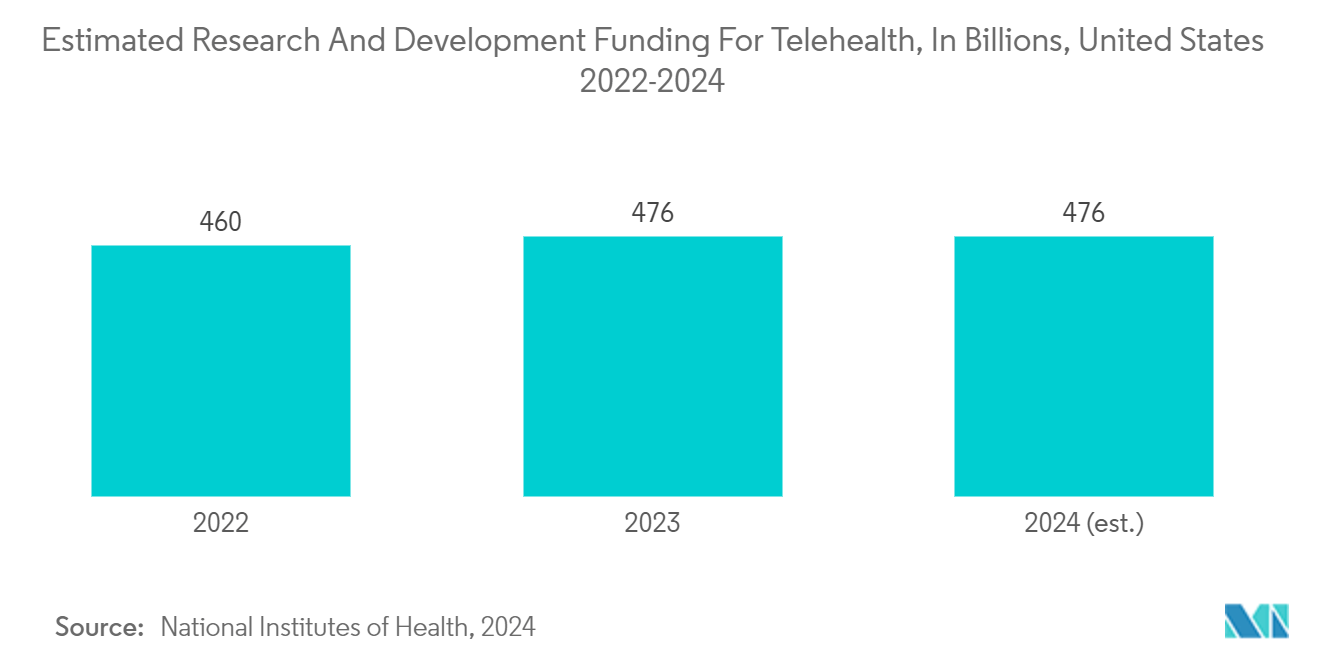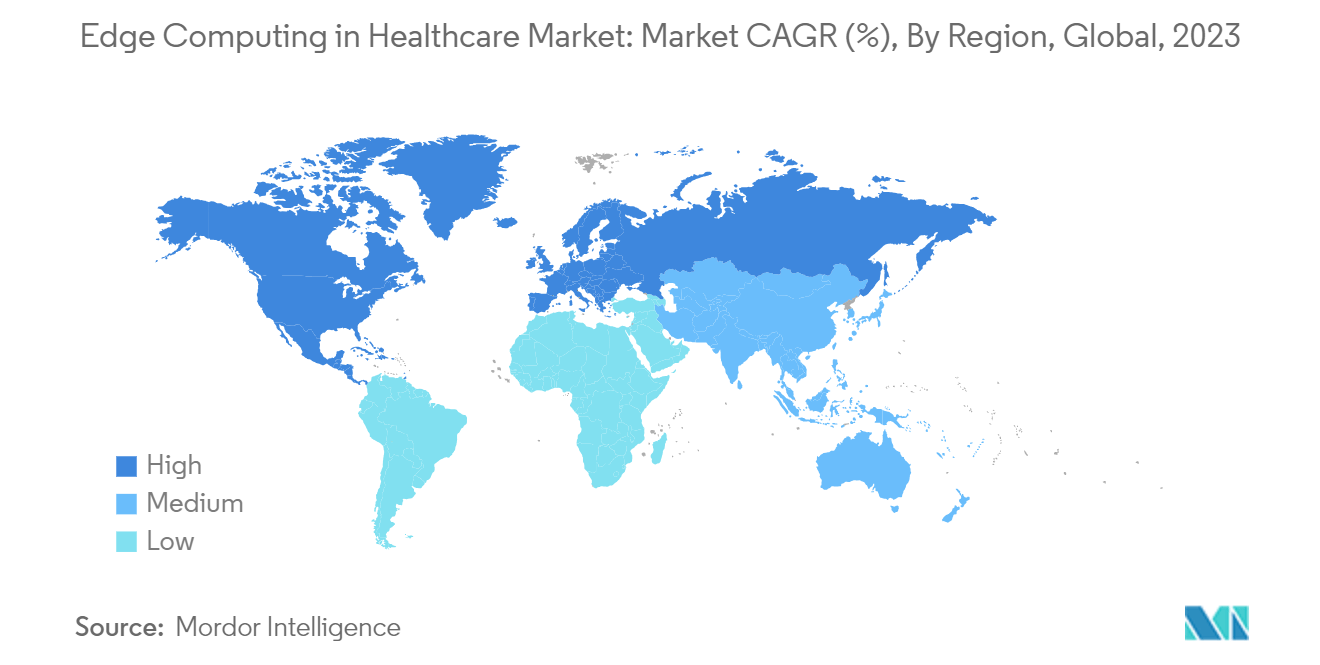Market Trends of Edge Computing In Healthcare Industry
The Telehealth and Remote Patient Monitoring Segment is Expected to Hold a Significant Market Share During the Forecast Period
By utilizing edge computing technologies, telehealth providers can provide a more efficient and integrated experience, which leads to higher engagement and satisfaction. The patients can access remote consultations and medical records and monitor their health and wellness using wearable devices. The increasing investments to increase the adoption of telehealth to reduce the healthcare burden and rising research activities for the incorporation of edge computing in patient monitoring are expected to drive segment revenue during the forecast period.
The increasing investments by government organizations to increase the adoption of telehealth services, which increases the demand for edge computing software to process patient data, are expected to drive the market during the forecast period.
For instance, in May 2022, the Department of Health and Human Services (HHS) awarded USD 16.3 million in grant funding to support 31 grantees to enhance and expand the telehealth infrastructure and capacity of Title X family planning clinics across 26 states of America. Hence, the increasing investment in the adoption of telehealth services is expected to drive the market during the forecast period.
Also, the growing research activities for the incorporation of edge computing in telehealth and remote patient monitoring are expected to increase the accessibility and affordability of edge computing technologies and will drive the market during the forecast period.
For instance, in April 2023, The University of Wisconsin School of Computer, Data, and Information Sciences (CDIS) at UW–Madison and GE HealthCare collaborated to explore artificial intelligence (AI) and edge computing to improve precision and flexibility in patient monitoring technology. Hence, such collaboration between the research institutes accelerates the adoption of edge computing technology in healthcare for patient monitoring that can support clinicians in providing real-time, critical patient care, which will drive the market during the forecast period.
Hence, the increasing investment by government organizations to increase the adoption of telehealth services and growing research activities for the incorporation of edge computing in patient monitoring are expected to drive segment growth during the forecast period.

North America is Expected to Hold the Significant Market Share During the Forecast Period
Edge computing in the healthcare market in North America is majorly driven by the increasing adoption of digital solutions in hospitals, advanced healthcare infrastructure, increasing strategic activities by the key players, and increasing burden on the healthcare industry.
The growing digitalization of the healthcare industry in North America increases the utilization of edge-computing technologies to enable the real-time data analysis of medical devices such as patient monitors, wearables, and imaging equipment. It improves patient care, which will drive the market during the forecast period.
For instance, according to the Canadian Digital Health Survey, the online survey conducted in November 2022 with 12.4 thousand Canadians across all provinces and territories showed that 94% of Canadians were interested in accessing digital health services. Hence, the rising digitalization of healthcare in the country is expected to drive edge computing software for efficient analysis of the data produced by the digital application and help clinicians make informed decisions in less time. Therefore, the rising digitalization in healthcare is expected to drive the market during the forecast period.
Also, the increasing strategic activities, such as the launch of new edge computing solutions to increase access to edge computing technologies, are expected to drive the market during the forecast period.
For instance, in June 2024, NVIDIA, a technology company, launched the NVIDIA AI Enterprise-IGX with NVIDIA Holoscan on the NVIDIA IGX platform. This platform helps medical providers develop and deploy edge AI solutions faster with enterprise-grade software and support. Some of the medical technology companies, Barco, Karl Storz, Medtronic, and Moon Surgical, adopted the NVIDIA IGX with Holoscan to accelerate the development of AI-powered and edge computing solutions for medical diagnostics, surgical copilots, and surgical robots. Hence, the launch of such solutions is expected to increase the accessibility of edge computing technologies and drive the market during the forecast period.
Hence, the increasing digitalization of the healthcare industry and increasing strategic activities, such as the launch of new edge computing technologies, are expected to increase the accessibility and affordability of these technologies and drive the market during the forecast period.


